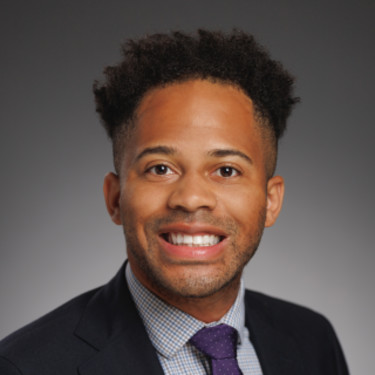“This is Dr. Mohr.” I answered a number I didn’t recognize.
“It’s your father-in-law,” said the frantic voice on the other end of the line. “He collapsed. The paramedics are working on him now.”
“They’re doing compressions? Stop! Put the paramedic on the phone!”
My father-in-law, the stoic Danish-American Navy veteran, had been in hospice for three months. His POST (physician order for life-sustaining treatment) form was on file with the hospice agency and his custodial care facility: DNR/DNI, comfort measures only.
My father-in-law welcomed me into his home like we were old friends. I recall the day I met him when he pulled a bottle of Aquavit from his freezer, poured us each a shot, and toasted “skol!” Practical to a fault and a brilliant machinist, at 85 he developed a chronic cough, dyspnea on exertion, and hypoxemia. The echocardiogram result was discouraging: constrictive pericarditis. His frailty precluded his surgical candidacy.
A perpetual Cornhusker football fan, he faithfully attended televised games at our house every Saturday that autumn. Even at rest he was profoundly short of breath in those weeks preceding his death and had sustained several falls.
Four days before his death we celebrated his 86th birthday, everyone sensing the finality of the time together. We told stories, laughed, and prayed. My father-in-law had a mental flexibility and resilience that was remarkable. Regardless of physical challenges from health, his attitude was one of fulfillment, optimism, and faith.
“Who is this?” The paramedic sounded gruff.
“I’m the patient’s daughter-in-law. I’m a physician. He’s a DNR, he’s on hospice. Stop doing compressions.”
1, 2, 3, 4, 5, 6, 7, 8, 9, 10 … I listened to the ACLS algorithm unfold in the background.
“Are you the health care agent?”
“No. My husband is but they couldn’t reach him.”
“Do you have the DNR order in your hand?”
“No! It should be there at the facility!”
“Ma’am, I’m sorry, but legally we can’t take an order from you.”
I hung up and desperately called my husband until he picked up.
“Your dad is being coded, getting compressions, I need you to tell them to stop.”
Grateful for the ease of three-way phone call technology, he instructed the paramedic to discontinue resuscitation efforts.
Every morning, my father-in-law would walk the 50 yards from his cottage to the main building to have meals. This was becoming increasingly taxing, and he now required a rest break near the lobby before walking to the dining area. “I’ll just sit a moment and rest,” he told his wife. When staff came to check on him, he was pulseless and unresponsive.
After I hung up, I replayed the scenario in my head and wondered why the paramedics were called rather than hospice. Why were compressions started? Did EMS request a POST form? Did the facility fail to procure it? Why was his body subjected to this hardship when he was at peace with his death?
As a geriatrician and as a daughter-in-law, my heart broke. Those of us in health care have borne witness to the violence of a code, but here I was also bearing witness to the aftereffects of coroner evaluation. We waited three hours with his body untouched on the floor in the dining area of the facility.
What an absolute failure of the medical system.
With custodial care staff lacking, long-term care reimbursement poor for CNAs and nurses, staff turnover, impersonal care models, and overall ageism in health care, I am skeptical the system will improve.
Yet, I must have hope that it can.
In the clinical setting when interacting with frail older adults, I consider goals of care discussions paramount to providing excellent patient care. If I can offer nothing else, I can at least offer my patients a semblance of control and autonomy when their bodies face the impersonal algorithm of modern medicine. My father-in-law’s experience has left me feeling like I am, in a way, guarding my patients from the medical system — but that my efforts may be futile. And that across this messy continuum of care, all the goals of care discussions, POST forms, and life-sustaining treatment documents may not matter at all if medical professionals do not ask about or adhere to these documents.
In 1814, Thomas Jefferson penned a letter to his friend, the ailing John Adams. Medicine was in its infancy; the ACLS algorithm didn’t exist. The tinkerer and historian that he was, my father-in-law would have appreciated Jefferson’s words: “Our machines have now been running 70 or 80 years, and we must expect that, worn as they are, here a pivot, there a wheel, now a pinion, next a spring, will be giving way; and however we may tinker them up for a while, all will at length surcease motion.”
This is not an article or a reflection on what older adults desire at the end of life, nor is this a reflection of cultural views on end of life. This is an article about choice amid a complex, messy, and impersonal medical system. My father-in-law made a request of his physician, with the cognitive ability to do so, and chose not to undergo resuscitation. Despite this, the health care system denied his request to die peacefully. I take solace in knowing he was likely already gone when CPR started.
What solutions are there at the outpatient, long-term care, EMS, or hospice level to ensure patients’ end of life wishes are respected? Should patients wear ID bracelets identifying code status? Should facility staff run mock scenarios where the POST form location is identified? What role does the hospice agency play in ensuring facility staff and EMS are aware of the patient’s end of life goals?
I don’t have the answers, but the problems remain. My father-in-law was a problem-solver, and this would be one problem I would love to solve for him.
Which solution would you propose for this issue? Share in the comments.
Dr. Mohr is a geriatrician in Boise, Idaho, where she cares for older adults across the medical continuum of care. She received her medical degree from the University of Nebraska Medical Center in Omaha, where she stayed and completed her residency in internal medicine. She then completed her fellowship training in geriatrics at Oregon Health Science University in Portland. She is a certified medical director and is hospice medical director certified.
Illustration by April Brust







